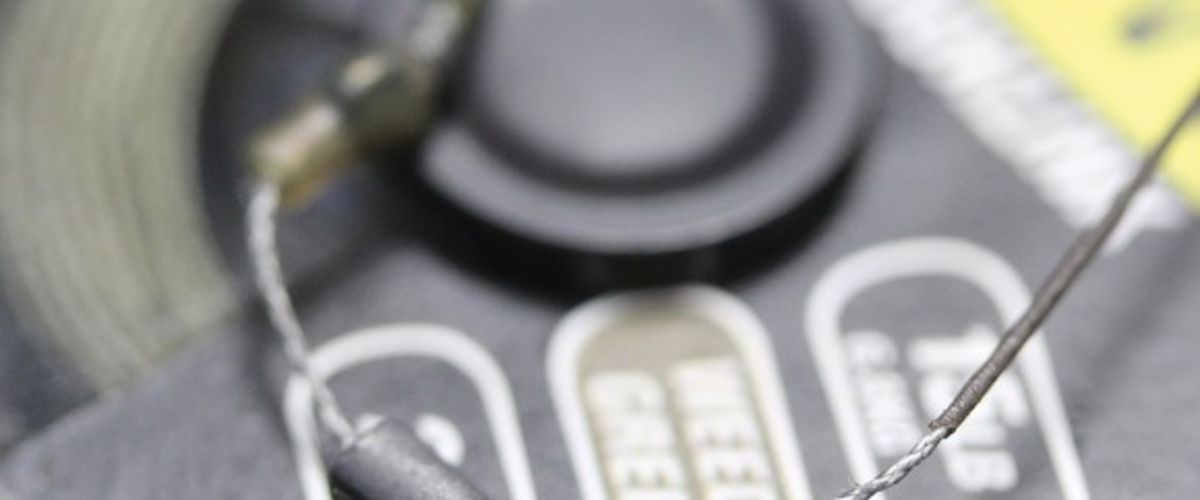
The Point Of No Return
Avid Carper Mat Woods discusses why, when it comes to combi-rigs, ‘X’ always marks the spot…
Let me guess. Like me, you know that tying a combi-rig from two separate materials is more mechanically sound than just using a coated braid and peeling a bit back – but be honest – those coated braids sure are handy! Over time, coated hooklinks have progressed beyond belief. From the original versions distributed by brands like Kryston, we now have a minefield of coated braid in every colour under the sun, every stage of stiffness and with virtually every braid imaginable underneath. And why not? We all like different things and often those variations can bring better results.
Most of my angling friends carry five or six coated hooklinks, which I’ve always found strange. What usually happens is they buy a few, use the one they like, then have the others in their box for show. I carry Avid’s Captive Coated Braid in 15lb and 25lb. One is stiffer than the other, a bit thicker and subsequently a bit stronger. Job done.
When I want a stiffer boom section for the combi-rig, no coated braid cuts the mustard. You have to steam the ones that are any good and even then, they don’t keep their rigidity like other materials. Fluorocarbons, stiff bristle filaments and monos all play a part in the creation of a ‘true’ combi-rig, which to my mind was best explained by Tim Paisley in his book ‘Carp!’ Tim caught the biggest carp in the world on a combi-rig he had been honing on other waters for many years, and in my opinion that rig is hard to beat.
Tim conjectured that the reason his combi-rig worked was point ‘X’: the point of no return. Point ‘X’ was where the two materials were joined, which in his case was a small rig ring. He had an inch or two of supple braid with the hook attached and a boom created with Amnesia, a stiff nylon material. He surmised that once the join between the soft braid and stiff mono was past a carp’s bottom lip, it could not go back out the way it went in, because the stiff material would hold it in place. Once this had happened, the braided section, with hook arrangement, could work as intended.
Based on this principle, which is arguably why the rig works so well, a softer boom section doesn’t offer the same benefits, as point ‘X’ is not so defined. It’s a grey rig, as opposed to one that has defined black and white – in this instance, stiff to supple.
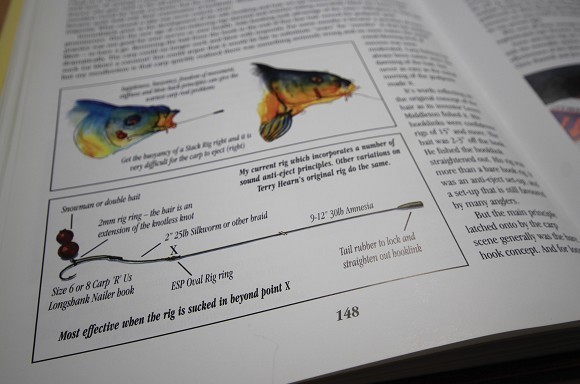
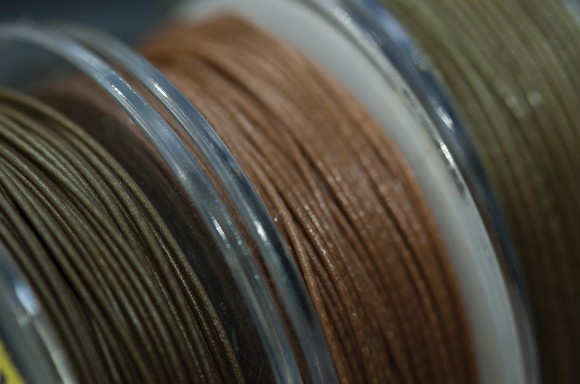
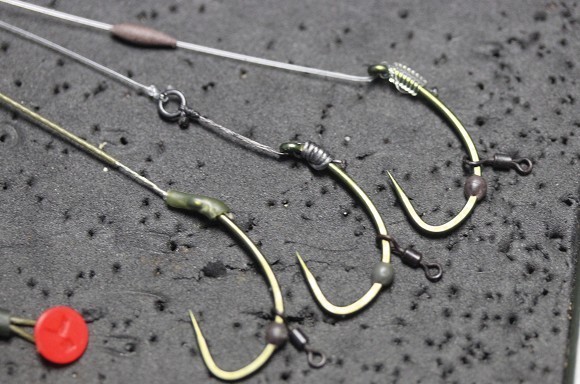
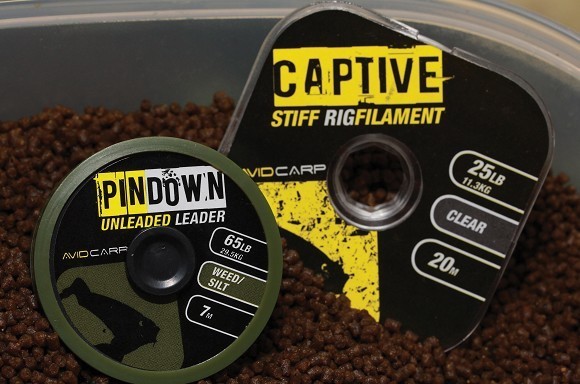

The issue comes, however, with presentation. A lead can drag a stiff boom into a soft lakebed and kick it up from the lakebed like a crane. Not the best way to avoid spooking a carp! Softer materials can hug the contours more effectively, so it really is a case of balancing the options.
If the fish are ‘riggy’, a stiffer boom with a defined point ‘X’ is the way forward. If the lakebed is soft, my way around this has always been to use a helicopter rig. Simple, but it works. If the fish aren’t so clued up, then the softer boom is fine and you’ll likely catch just as many on a coated braid as you will a ‘proper’ combi-rig.
Coated braids are popular for a reason – they work – but rather than catching the same number of fish as everyone else, think about how you can stack the odds in your favour with a variation in materials. There are hundreds of braids, monos and fluorocarbons to try and sometimes you’ll find a perfect combination for the water you’re targeting.
I can remember fishing the day ticket circuit back in my magazine editing days and doing consistently well on a set-up that uses a simple idea shown to me by Ian ‘Chilly’ Chillcott. It uses a 30lb fluorocarbon as the boom to a small rig ring, and then a doubled-over length of braid that can be passed through itself to create a super short supple section. It’s really neat and means you only need to change one part of the rig after a fish.
The contrast from the stiff fluorocarbon to the 10lb braid created a noticeable point ‘X’, which I am sure is why it was so successful.
I have messed around using shockleader knots to connect the two materials and still like this set-up, but it’s hard to get the braided section really short without a lot of practise. A rig ring or small swivel just makes life so easy.
Combi-rigs can of course be used with the ‘reverse’ method, using the stiff section at the hook and a supple boom. This is a set-up I know some of the Avid lads have been doing really well on for the last couple of years and will be the subject of my next ‘Little Things In Life’ piece. Until then, give your combi-rigs some thought. If everyone else is continuing to use coated braids and only adjusting things like the shrink tubing length and hook pattern, be the first to do things the old fashioned way and use a ‘proper’ combi-rig. You’ll be glad you did.
MAT WOODS
How to.. Tie up the combi rig loop trick
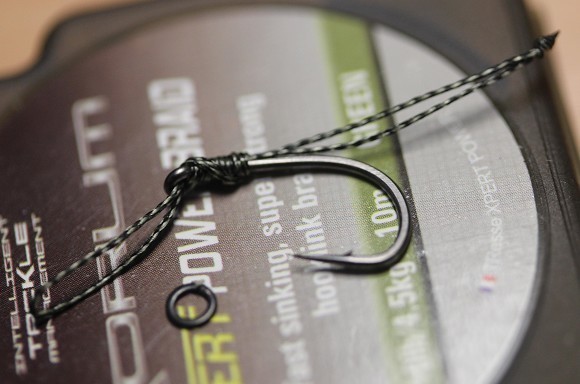
STEP 1 Doubled over 10lb braid makes an ideal supple section.
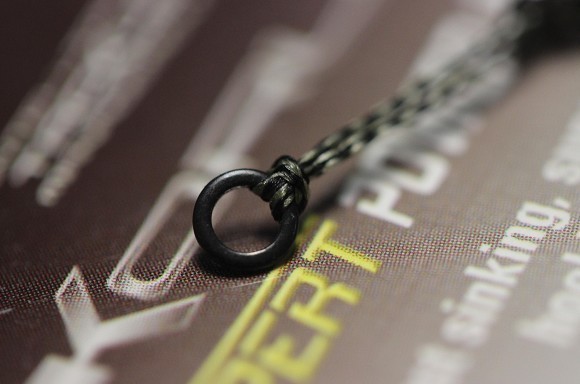
STEP 2 Passing the loop through itself makes the connection to the ring.
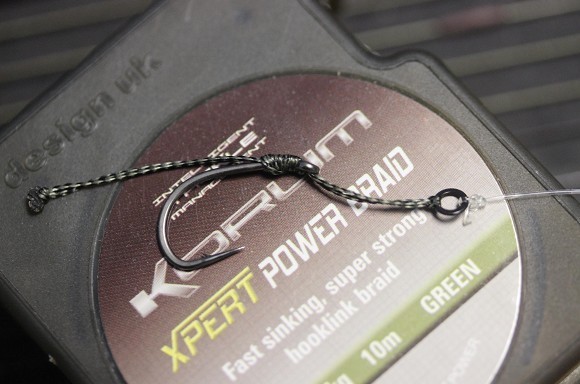
STEP 3 Doing it this way means you get a super short braided section.




